These look much better when enlarged ... just click on any image!
The huge numbers of geese wintering at Bosque were the attraction that initially drew me to Bosque, but over time I've become more interested in photographing the Sandhill Cranes that also wintered there. They are are large birds: weighing up to 11 pounds; standing 46 inches tall; with a wingspan of 6 1/2 feet.
Cranes are skittish about humans and go out of their way to not fly over them (particularly at a low altitude) so this first shot captured directly overhead is not very common in my image library. It provides a good sense of the size of the bird and its very cool wings:
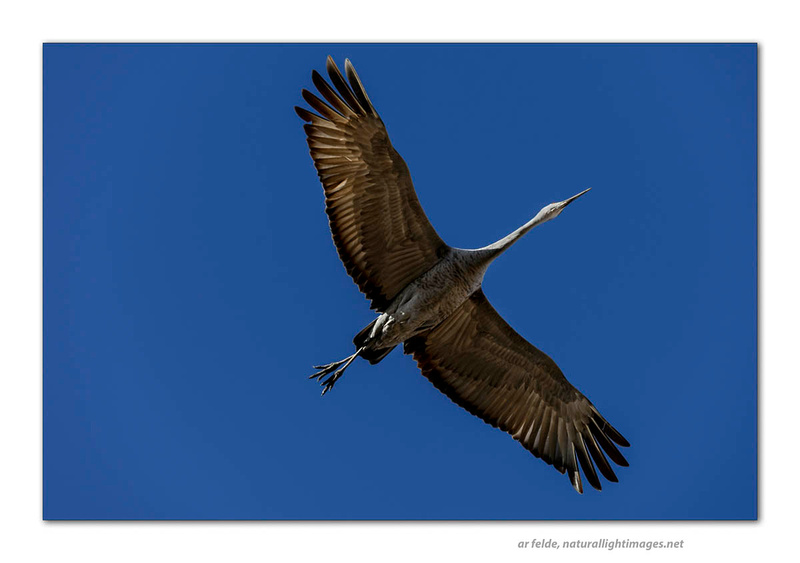

The Cornell Ornithology Lab says: "Sandhill Cranes mate for life, choosing their partners based on dancing displays. Displaying birds stretch their wings, pump their heads, bow, and leap into the air. Although each female usually lays two eggs, only one nestling typically survives to fledge. Mated pairs and their juvenile offspring stay together all through the winter, until the 9- to 10-month-old juveniles finally separate from their parents the following spring. During migration and winter the family units group together with other families and non-breeders, forming loose roosting and feeding flocks..." At Bosque, this year, the number of birds wintering there was in excess of 10,00
This is an example of the display discussed in the paragraph above:


And here is a family grouping. Notice that the bird in the middle has different colorations ... particularly on the top of the head. I believe this is a juvenile; the last bird is the female; and the first bird is the male of the family.
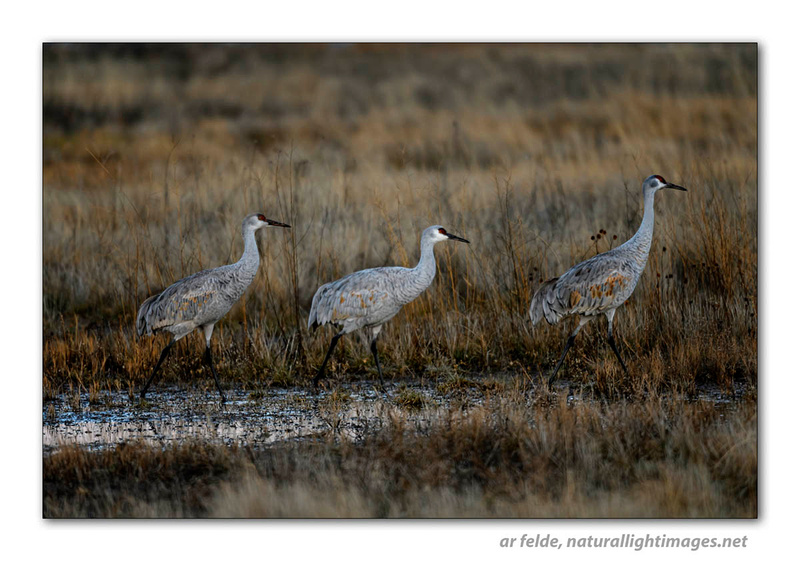

Cranes, like the geese, roost in shallow ponds. It is thought they do so because it is much more difficult for predators to sneak up on them during the night. In addition to the water "barrier", Cranes post sentries to watch during the night to alert the flock if a predator enters the area. Here is one group of sleeping cranes photographed in the early morning:
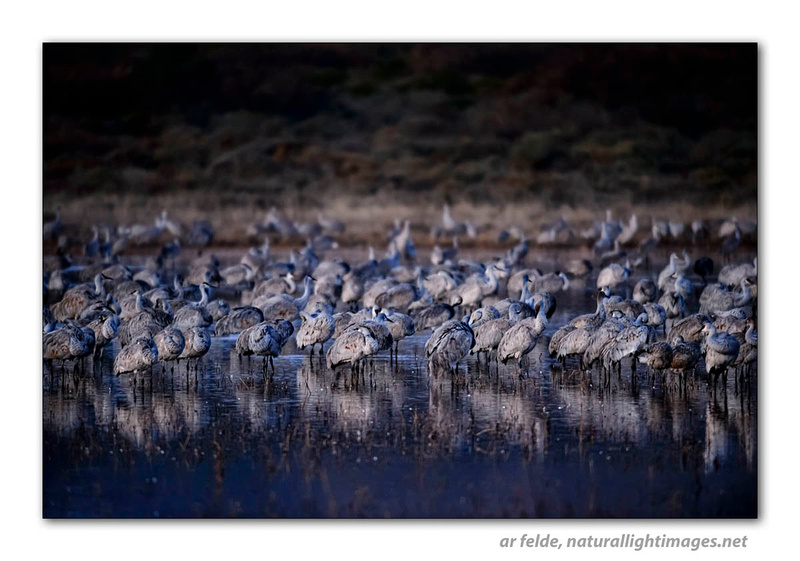

The cranes fly in from their daytime feeding locations starting an hour before sunset and lasting well after darkness falls over the area. They mostly come in in small groups but on occasion I've seen large groups of a dozen or more.
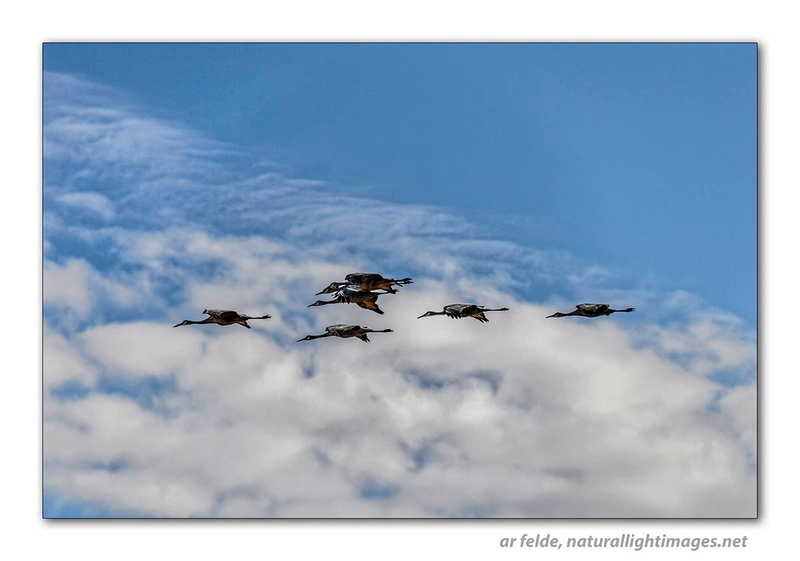

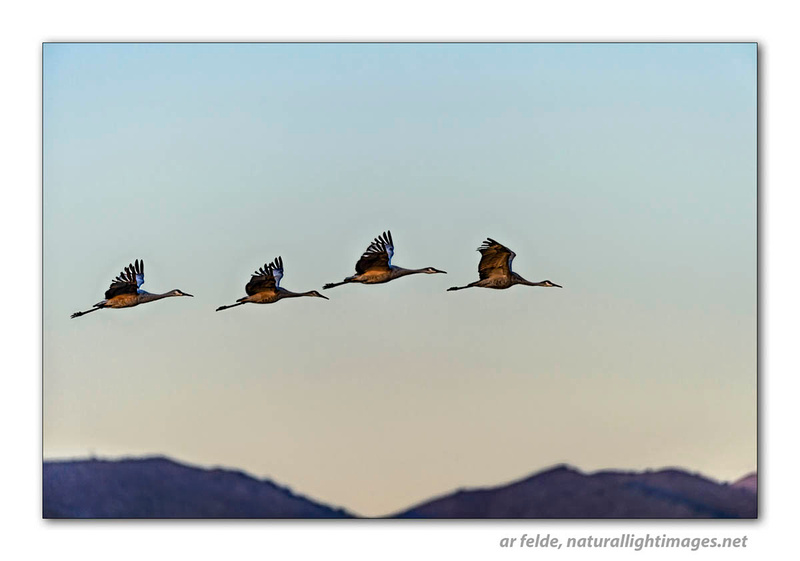

Sandhill Cranes have an ability to make a very steep approach to their landing spot. It is called "Parachuting," and is accomplished by raising their heads; lowering their feet; and extending their wings out. The movement creates drag allowing them to "float" down to the landing without creating a lot of speed. When near the ground, they revert back to horizontal flight and land feet-first like all birds. The image belows is an example of three cranes in the process of parachuting into the landing. It is a very neat trick that works so well because of those large wings.
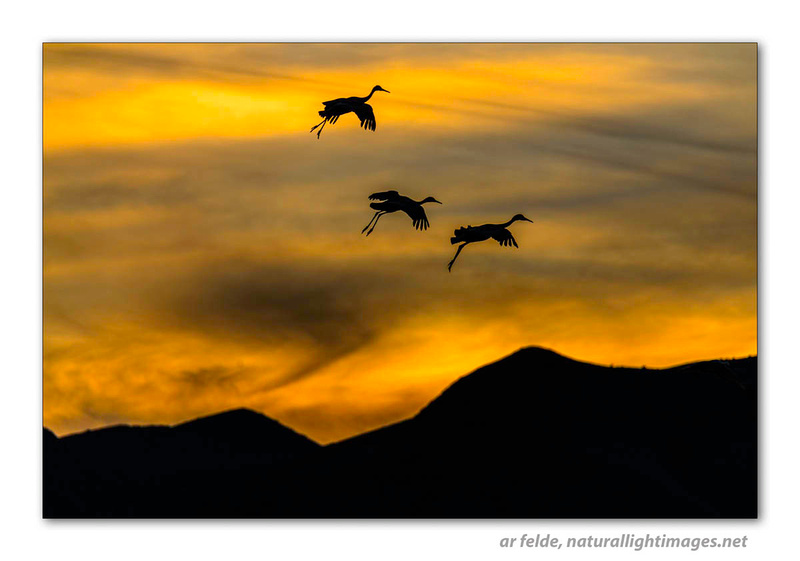

Once on the ground they rooting around looking for creepy, crawly things in the mud before bedding down:
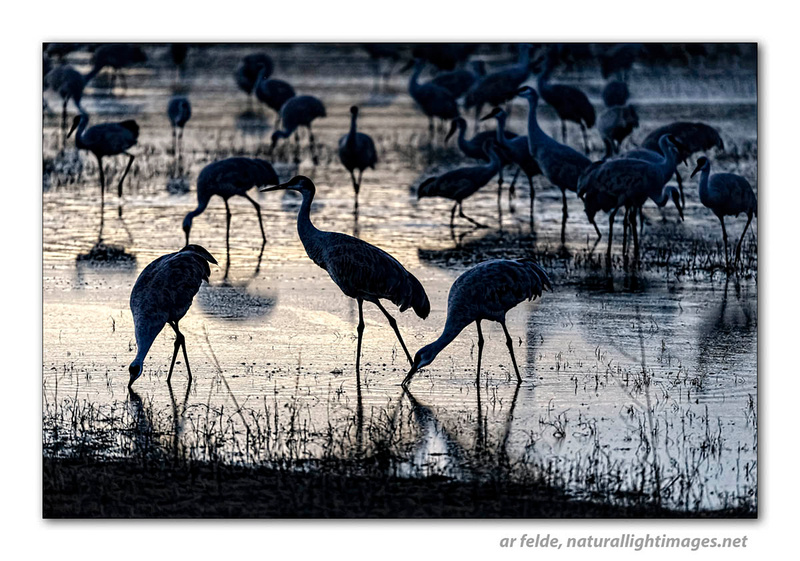

In the morning, the cycle starts over. This time the birds fly out to the fields where they feed. It starts with the large group all standing around seemingly looking at each other ... I'm anthropomorphizing ... who will be first to leave?
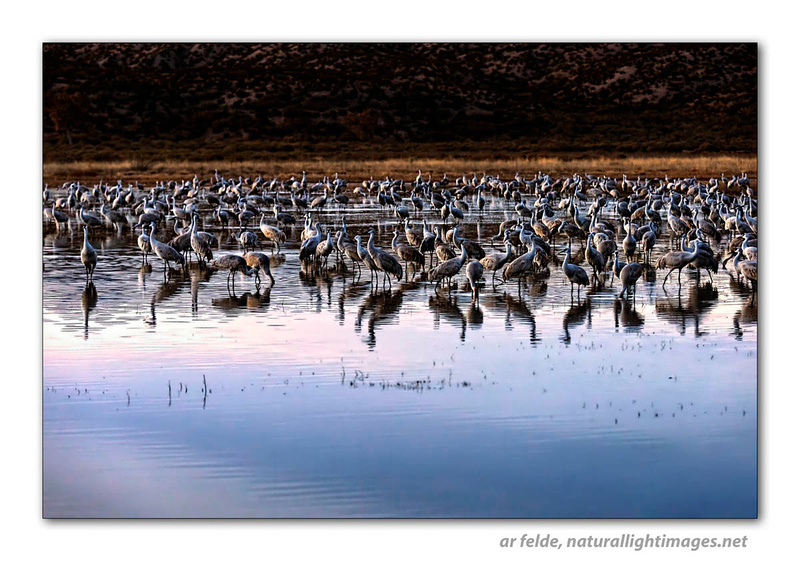

And, then it starts. In the next image, the group of birds is slowly walking into the wind waiting for something to cause flight.
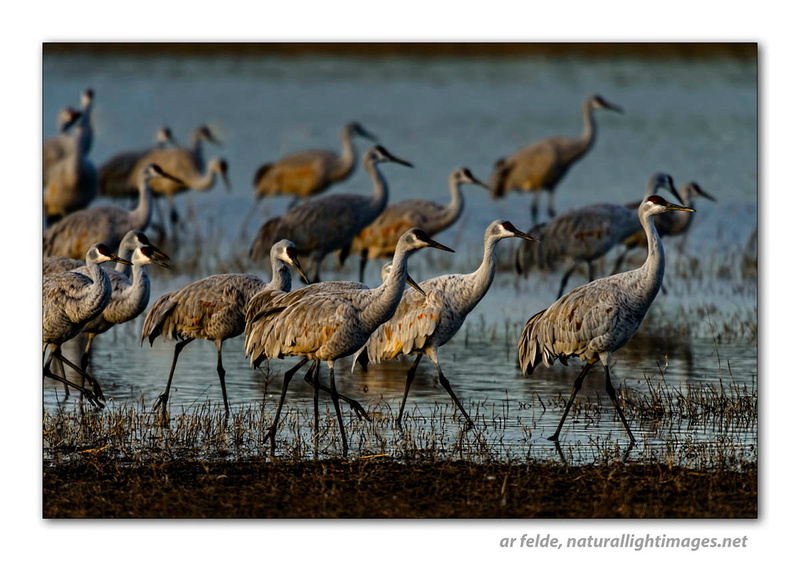

Another example from a different time:
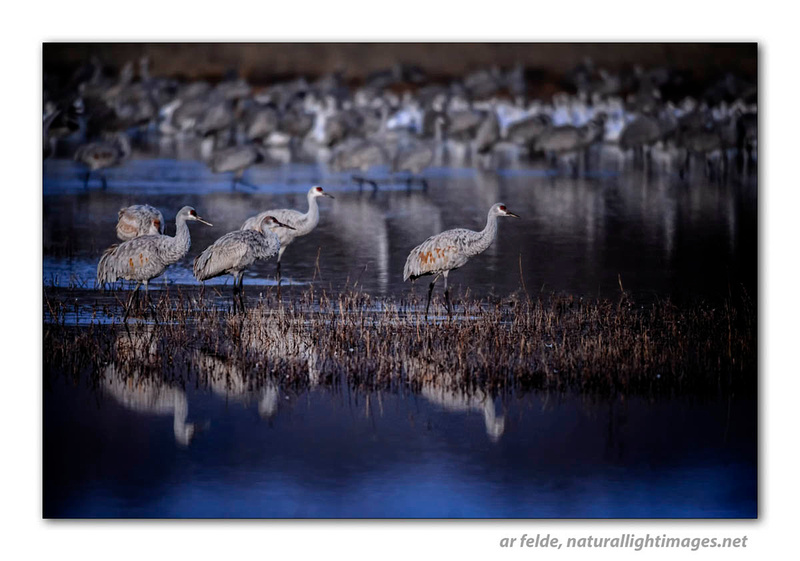

They stop and the lead bird seem to lean into the direction of flight. This is the signal that they are getting ready to go.
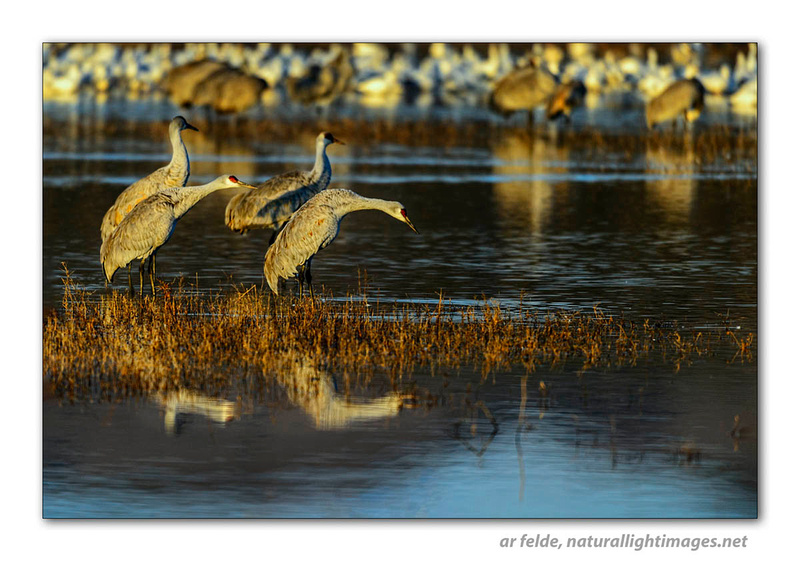

Finally, the moment, it is GO Time and the lead bird starts running:
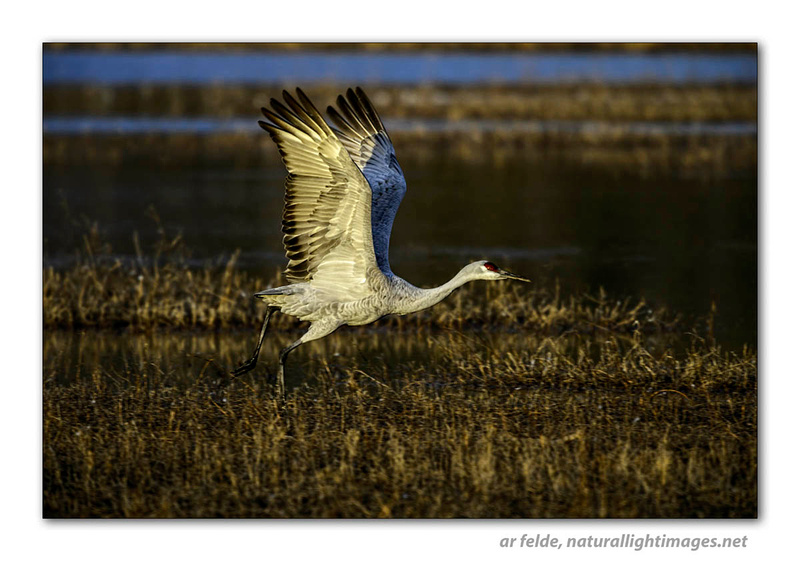

It takes two or three running steps ...
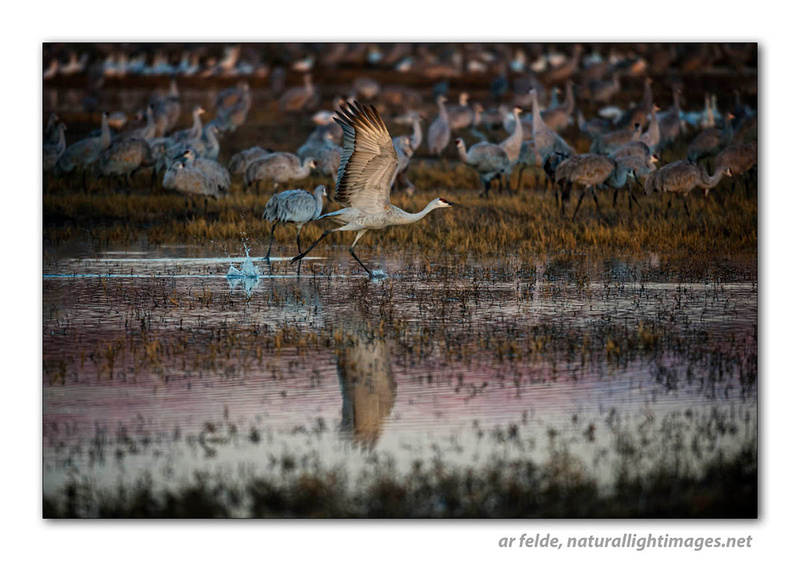

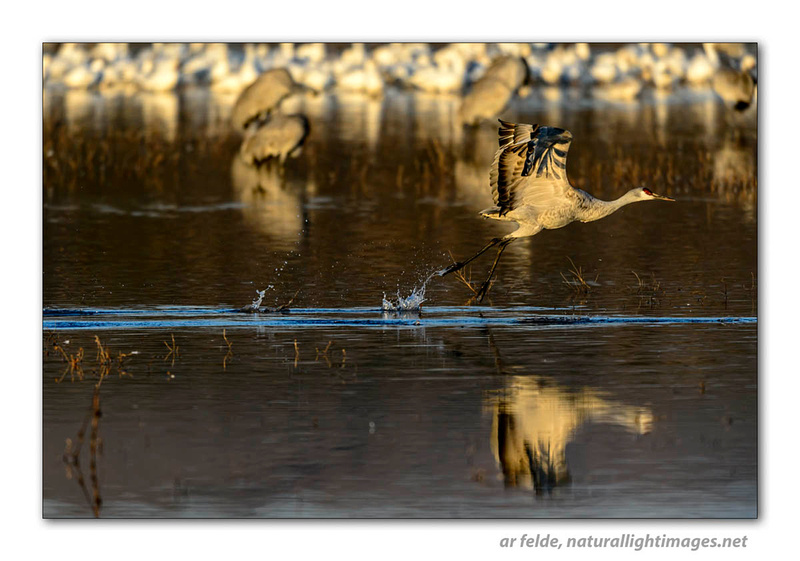

and a leap to reach flying speed. It's time to fly!
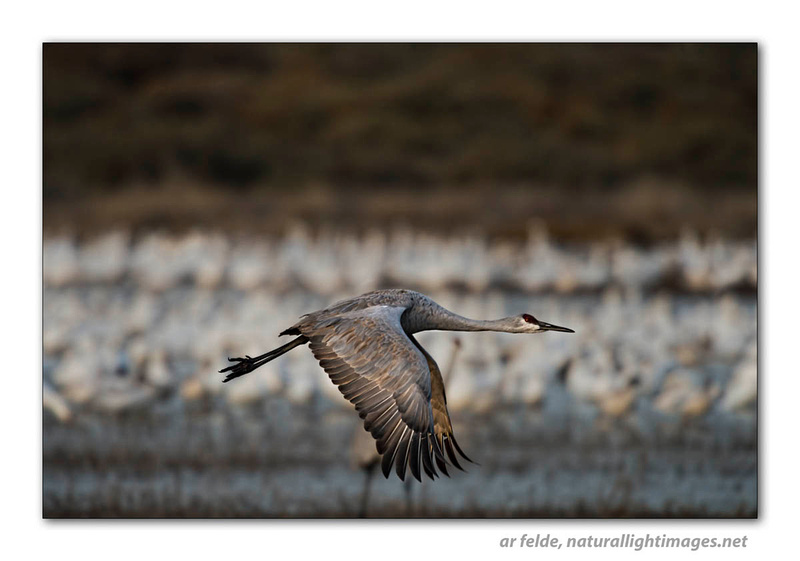

The leader of the group is followed by rest ... here's 6 birds as they began their first flight of the day:
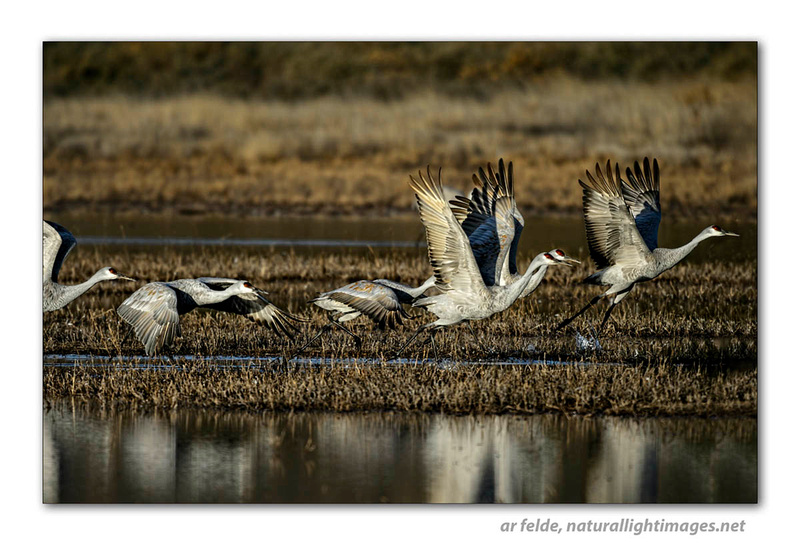

Once they are up in the air, they form up as a group and head off to their feeding location ...
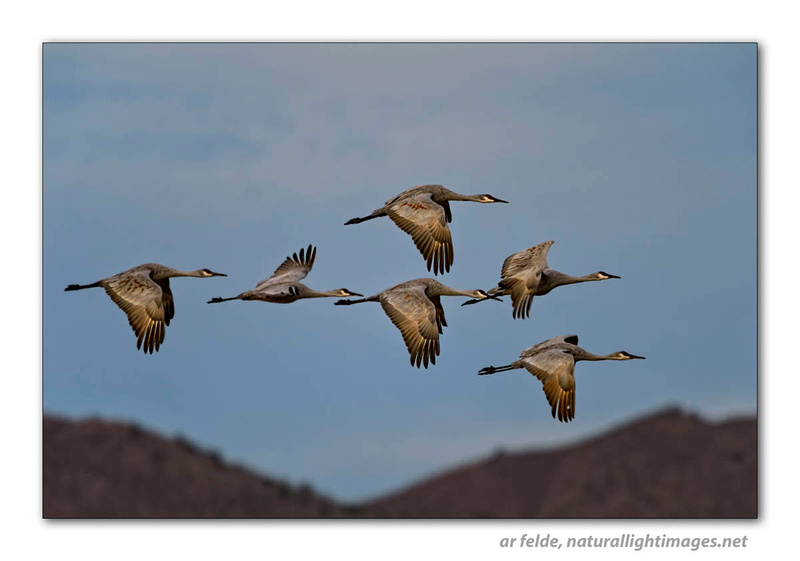

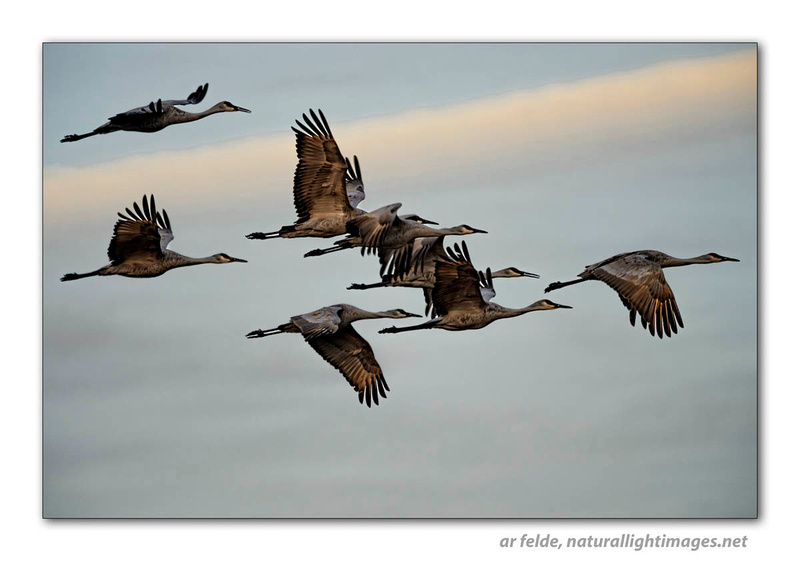

They are very wary of flying over people on the ground ... I'm guessing they have been hunted. Here's a little mix-up where two of the birds wanted to our left and three were going right! We almost had a Mid-Air!
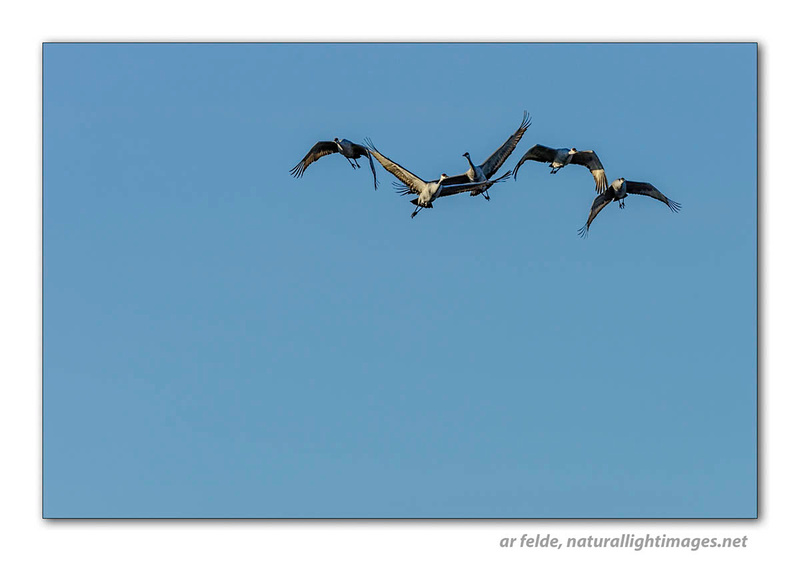

My favorite departure shot, though, is this last image. A single bird in great light with clouds in the background picking up the reddish tones of the reflected rising sun's light:
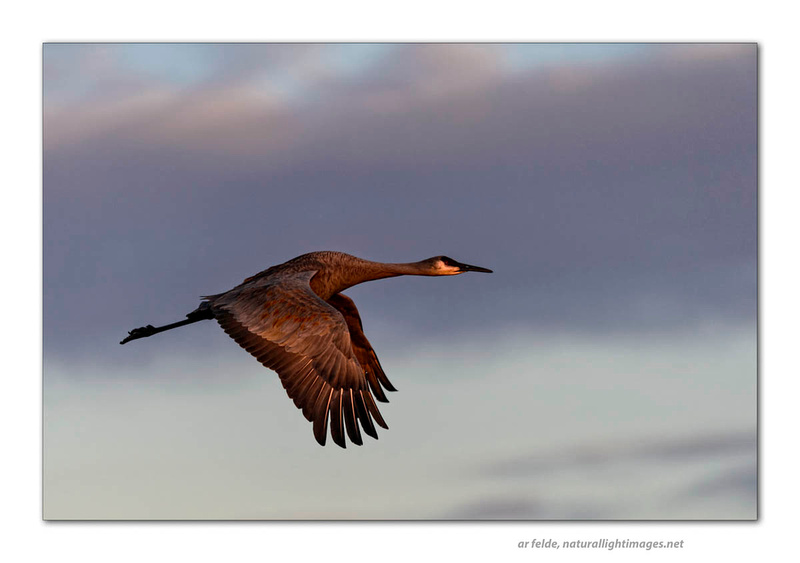

I apologize for the length of this post. I did not want to break it into two separate posts ... it is the all-time longest blog!
As always, thank you for looking at the images of this very cool bird. In many ways, still photography doesn't do them justice as it doesn't include graceful movements or the sounds that are a part of the experience.
Adam